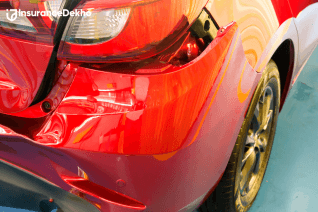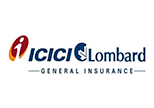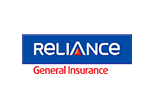What is Total Loss in Car Insurance?
Everything You Need To Know About Total Loss In Car Insurance
Total car loss is an important car insurance term that every vehicle owner must be aware of, especially if they find themselves in tricky situations like road accidents or car theft. Understanding this essential aspect of the Car Insurance claim process makes it easy for prospective policyholders to make informed decisions while browsing through insurance policies. Another aspect of car insurance, the IDV also comes to light when we try to understand the concept of a Total Loss. This article elaborates on points like total loss and IDV in car insurance, how they are calculated, what leads to a total loss, etc. Read on to learn more.

What Is IDV? How Does It Affect Total Loss In Car Insurance?
Total loss and IDV are deeply connected. Before we dive deep into the total loss concept, we need to learn about IDV. IDV, or Insured Declared Value, is the maximum assured amount an insurance company values your car. For new vehicles, insurers set the IDV at 95% of the car’s ex-showroom price. Insurance companies consider this value when calculating and deciding whether a vehicle is a total loss. Total loss helps insurance companies estimate whether a damaged car is redeemable. Hence, every policyholder must be aware of this term.
To understand how IDV is calculated, let’s look at the following example. If the ex-showroom price of a new car is INR 5 Lakhs, then a car insurance company sets its insured declared value at 4,75000 i.e. 95% of the car’s price. The IDV is set at the beginning of the insurance policy and decreases annually due to depreciation. It plays the most important role in determining whether a car is a total loss or a constructive total loss.
How is IDV Calculated?
Although it is subject to changes from time to time, the base formula for calculating the IDV is
IDV= (Manufacturer’s listed selling price - depreciation) + (Accessories not included in listed selling price - depreciation) excluding registration and insurance costs.
The calculation of IDV follows specific guidelines set by regulatory authorities.
The depreciation rates are applied based on the age of the vehicle, as shown in the table below:
|
Age of Vehicle |
Depreciation Rate |
|
Below 6 months |
5% |
|
6 months to 1 year |
15% |
|
1 year to 2 years |
20% |
|
2 years to 3 years |
30% |
|
3 years to 4 years |
40% |
|
4 years to 5 years |
50% |
For vehicles older than five years, the IDV is mutually agreed upon by the insurer and the policyholder during policy renewal.
Definition of Total Loss in Car Insurance
Total loss is the term that insurance companies use to define a vehicle which has been damaged beyond repair due to unforeseen events like an accident, fire or theft, deeming it unusable in the foreseeable future in any way, shape or form. Under such circumstances, insurance companies take the complete ownership of the damaged vehicle and pays policyholders the full IDV.
For example, if your car’s IDV is ₹5 lakh and it has suffered severe damages due to an accident or has been recovered after a theft but is deemed a total loss after an inspection, your insurance company will take the full responsibility for the vehicle and pay the complete IDV to you. This decision is subject to the policy rules and regulations set by the insurance companies from time to time.
What Is Constructive Total Loss?
Every insurance company sets an upper limit on the amount it will spend on damage repairs. If your car suffers grave damages that incur repair expenses amounting to more than 75% of the IDV, insurance companies deem it as a constructive total loss. When a vehicle is deemed a constructive total loss, policyholders have the option to accept the IDV payout and keep the damaged car for their use.
For example, if your car's IDV is ₹5 lakh and the repair costs are estimated at ₹4 lakh (which is 80% of the IDV), your car will be deemed a constructive total loss after insurance surveyors have done their inspection and found that the car is usable after extensive repairs.
Scenarios Leading to Total Loss
The following circumstances lead to Total loss:
Accidents: When the insured car gets damaged beyond recognition during an accident, whose repairs cannot be covered by the insurance money, insurance companies can declare it as a total loss vehicle.
Theft: If the insured car is stolen and is not retrieved within a stipulated time frame, insurance companies cannot assess the intensity of the damage, thus rendering it as a Total Loss Vehicle. The insurance company will compensate policyholders based on their IDV at that point in time.
How Total Loss is Calculated
When the cost of repairing a policyholder’s car damages exceeds 75% of the IDV, it is considered a constructive total loss, as there are chances for the vehicle to be repaired and used by the policyholder. In the case of a constructive total loss vehicle, insurance holders provide
If the repairing cost is more than 100% of the IDV, insurance companies call it a constructive total loss.
What Happens After Total Loss is Declared?
When you file a claim for total loss, it’s essential to provide all necessary documentation, including accident reports and proof of ownership. The insurer will assess the situation and determine if your claim qualifies under total loss criteria. If approved, you will receive compensation equivalent to your vehicle's IDV, minus any applicable deductibles.
Additional Coverage Options
To enhance protection against total loss scenarios, policyholders can consider purchasing additional coverage options like Return-to-Invoice insurance. This add-on ensures that in case of total loss, you receive the full invoice value of your car, including taxes and registration fees, rather than just the depreciated value.
Conclusion
The term Total Loss is an important aspect of the insurance claim process. Every car owner must familiarise themselves with such terms to have a clear understanding of what it entails, so they can make an informed decision while purchasing one. It not only helps in navigating claims but also aids in selecting appropriate coverage options. Understanding the factors that influence total loss in car insurance and IDV will help potential buyers make informed decisions while deciding their insurance coverage and add-ons.














































